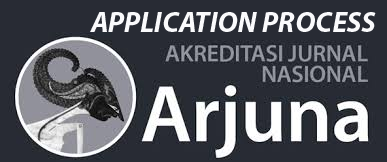Miskonsepsi Pemahaman Materi Bangun Datar Dengan Penerapan Teori Polya Di PGMI 3 UIN Sumatera Utara
DOI:
https://doi.org/10.56444/soshumdik.v2i4.1286Keywords:
Misconceptions, Mathematics, Flat Figures, Polya TheoryAbstract
Mathematics is a field of study that has an important role in education. Geometry is one of the mathematics materials taught in primary and secondary schools. However, students in PGMI 3 class still experience many misconceptions in understanding plane material by applying polya theory. The aim of this research is to identify and analyze common misconceptions related to plane material by applying polya theory. This research uses a qualitative method with a descriptive approach. The subjects of this research were 18 out of 39 PGMI 3 UIN North Sumatra students. The results of the research show that there are several misconceptions that occur which involve basic understanding of plane material, steps in solving problems with plane material, misunderstandings about what polya theory is like and making mistakes by not putting symbols in solving problems. This research aims to provide important insights into curriculum development and a more effective teaching approach in working on plane material by applying polya theory. With a more effective understanding of the misconceptions that arise in plane shape material by applying polya theory, appropriate action can be taken to overcome this problem and can help PGMI 3 students at UIN North Sumatra to develop an understanding of plane shape material by applying polya theory better.
References
Alfiani, D., Muchyidin, A., Izzati, N., Syekh, I., Cirebon, N., Perjuangan, J., & Cirebon, P. (2019).
Terhadap Miskonsepsi Siswa Pada Soal Matematika Bentuk Cerita. Limacon: Journal of Mathematics Education, 1(2), 49–58. http://jurnal.fkip.unila.ac.id/index.php/limacon
NCTM, (2010), Why is Teaching with Problem Solving Important to Student Learning ? Research Brief Posted on April 8, 2010
Nurlatifah, dkk,( 2013). Mengembangkan Kemampuan Penalaran Spasial Siswa Smp Pada Konsep Volume dan Luas Permukaan Dengan Pendekatan Pendidikan Matematika Realistik Indonesia. Prosiding Penguatan Peran Matematika untuk Indonesia yang Lebih Baik. UNY ISBN :978-979- 16353-9-4
Passmore, T. (2007). Polya’s legacy: Fully forgotten or getting a new perspective in theory and practice?
Polya’s legacy: fully forgotten or getting a new perspective in theory and practice. https://www.researchgate.net/publication/228337471
Sugiyono (2018), Metode Penelitian Kuantitatif, Kualitatif, dan R&D. Bandung: Alfabeta. Wigfield, A., & Meece, J. L. (1988). Math Anxiety in Elementary and Secondary School Students.
Journal of Educational Psychology, 80(2), 210–216. https://doi.org/10.1037/0022-0663.80.2.210










